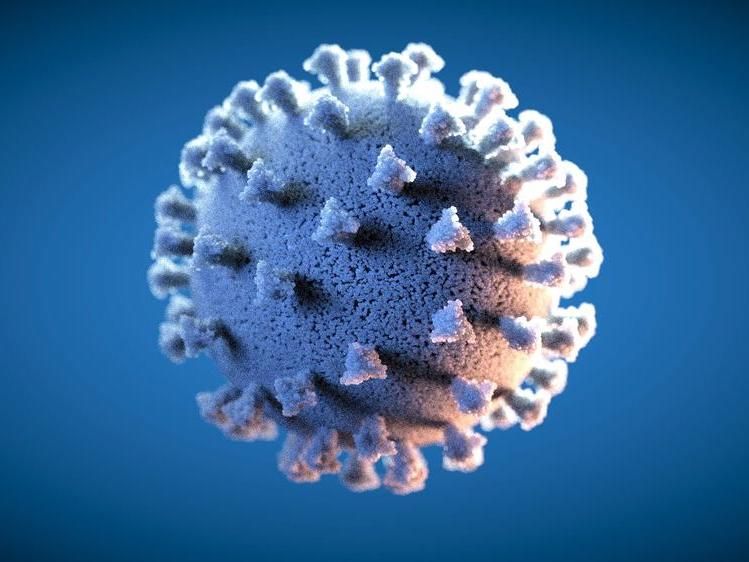DESY X-ray lightsource identifies promising candidates for COVID drugs
Existing active substances bind to key virus protein
Advertisement
A team of researchers has identified several candidates for drugs against the coronavirus SARS-CoV-2 at DESY´s high-brilliance X-ray lightsource PETRA III. They bind to an important protein of the virus and could thus be the basis for a drug against Covid-19. In a so-called X-ray screening, the researchers, under the leadership of DESY, tested almost 6000 known active substances that already exist for the treatment of other diseases in a short amount of time. After measuring about 7000 samples, the team was able to identify a total of 37 substances that bind to the main protease (Mpro) of the SARS-CoV-2 virus, as the scientists report online in the journal Science. Seven of these substances inhibit the activity of the protein and thus slow down the multiplication of the virus. Two of them do this so promisingly that they are currently under further investigation in preclinical studies. This drug screening – probably the largest of its kind – also revealed a new binding site on the main protease of the virus to which drugs can couple.

In a massive X-ray screening, scientists identified promising candidates for drugs against SARS-CoV-2 (artist's impression).
DESY, Science Communication Lab
In contrast to vaccines, which help healthy people to defend themselves against the virus, drug research is looking for drugs that slow down or stop the reproduction of the virus in the body of people who are already infected. Viruses cannot reproduce on their own. Instead, they introduce their own genetic material into the cells of their host and make them produce new viruses. Proteins such as the main protease of the virus play an important role in this process. Protease cuts protein chains produced by the host cell according to the blueprint of the virus genetic material into smaller parts that are necessary for the reproduction of the virus. If the main protease can be blocked, the cycle can possibly be interrupted; the virus can no longer reproduce and the infection is defeated.
Beamline P11 of DESY´s PETRA III research lightsource specialises in structural biology studies. Here, the three-dimensional structure of proteins can be imaged with atomic precision. The research team led by DESY physicist Alke Meents used this special capability to examine several thousand active substances from a library of the Fraunhofer Institute for Translational Medicine and Pharmacology and another library from the Italian company Dompé Farmaceutici SpA to see whether and how they “dock” to the main protease – the first important step in blocking it. Like a key in a lock, the drug molecule fits into a binding centre of the protease. The advantage of the drug library is that it contains active substances that have already been approved for the treatment of humans or those that are currently in various testing phases. Suitable candidates to combat SARS-CoV-2 could therefore be used in clinical trials considerably faster, saving months or years of drug development.
The special technical equipment at the PETRA III station P11 includes fully automated sample changes with a robotic arm, so that each of the more than 7000 measurements took only about three minutes. With the help of automated data analysis, the team was able to quickly separate the wheat from the chaff. “Using a high-throughput method, we were able to find a total of 37 active substances that bind with the main protease,” says Meents, who initiated the experiments.
In a next step, the researchers at the Bernhard Nocht Institute for Tropical Medicine investigated whether these active substances inhibit or even prevent virus replication in cell cultures and how compatible they are for the host cells. This reduced the number of suitable active substances to seven, two of which stood out in particular. “The active substances Calpeptin and Pelitinib clearly showed the highest antivirality with good cell compatibility. Our cooperation partners have therefore already started preclinical investigations with these two substances,” explains DESY researcher Sebastian Günther, first author of the Science publication.
In their drug screening using protein crystallography, the researchers did not examine fragments of potential drugs as is usually the case, but complete molecules of the drug. In the process, however, the team of more than 100 scientists also discovered something completely unexpected: they found a binding site on the main protease that had been completely unknown until then. “It was not only a nice surprise that we were able to discover a new drug binding site on the main protease – a result that can really only be achieved at a synchrotron light source like PETRA III – but that even one of the two promising drug candidates binds precisely to this site,” says Christian Betzel from the excellence cluster CUI of the University of Hamburg, co-initiator of the study.
“A particular strength of our method of X-ray screening compared to other screening methods is that we obtain the three-dimensional structure of the protein-drug complexes as a result and can thus identify the binding of the drugs to the protein at the atomic level. Even if the two most promising candidates do not make it into clinical trials, the 37 substances that bind to the main protease form a valuable database for drug developments based on them,” explains Patrick Reinke, DESY researcher and co-author of the publication.
“The investigations at PETRA III impressively show how relevant high-brilliance synchrotron lightsources are for the development of future medicines and for health research as a whole,” stresses Helmut Dosch, Chairman of the DESY Directorate. “We must and want to expand our infrastructures even more in the future to cope with health crises like the current one.”

























































